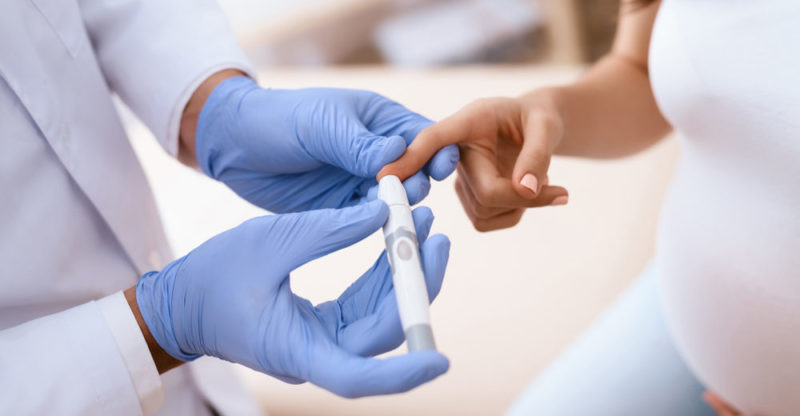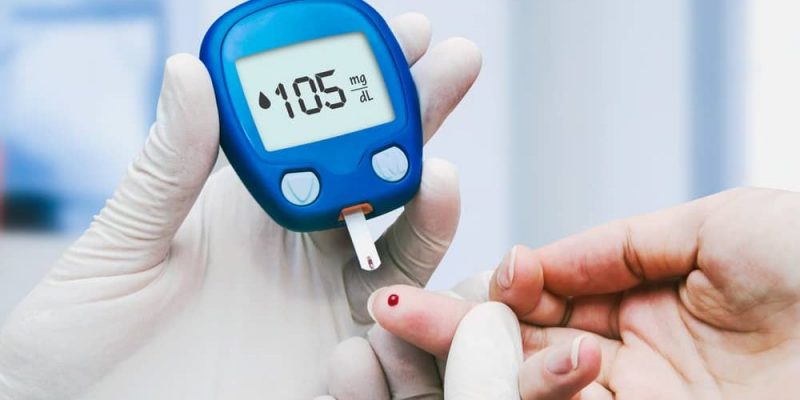We explain what diabetes is, how it is classified, and what its symptoms are. In addition, its characteristics, causes, and consequences.
What is diabetes?
Diabetes mellitus or simply diabetes is known as a set of disorders of the metabolism of the human body , which results in the appearance of dangerously high concentrations of sugar in the blood , due to a deficiency in the production of the hormone that captures glucose: insulin.This is usually accompanied by difficulties in the assimilation of fats , proteins , mineral salts and electrolytes, in addition.
The disorders of diabetes have to do with a very low production of insulin , or of poor quality, or a resistance of the organism to its action, which hinders its natural functioning, thus deregulating the levels of glucose in the blood and being able to cause serious failures. in the body, even death.
There are different types of diabetes, with different levels of severity, but in general it is considered an incurable and chronic disease , but it is controllable.
The latter requires from the patient a high level of commitment to medicinal intake and a rigorous diet that controls the entry of sugars and carbohydrates into the body.
Diabetes Name
The name of the disease comes from the Greek word diabétes which translates “compass” , metaphorically linked to “walking” and “step” (due to the opening of the “legs” of the compass).It was coined in the 5th century by the Greek physician Aretaeus of Cappadocia . On the other hand, the second word, mellitus , comes from the Latin mel (“honey”) and alludes, as a whole, to the sweet taste of the urine of diabetics, since the excess glucose tries to be discarded through the kidneys.
Types of diabetes

- Type I. The most serious and severe type, which afflicts 10% of diabetics, involves the total absence of insulin in the blood.
- Type II. The most common of all, occurs as a result of a progressive deterioration in the production of insulin, along with an increase in resistance to its effect and the accumulation of glucose.
- Gestational. Gestational diabetes afflicts some pregnant women during the second or third trimester of pregnancy, is usually transient and disappears after delivery.
- induced. They are the consequence of some pharmacological treatment, some disease of the pancreas, genetic syndromes and other ailments that have the collateral effect of producing a diabetic picture.
Diabetes symptoms
The main symptoms of diabetes are related to sudden and unexplained weight loss or gain , significant and constant increase in thirst or hunger, increased frequency of urination, recurrence of skin diseases that are slow to heal or do not heal , or dryness in the mucous membranes. However, in many cases diabetes can be asymptomatic.
Causes of diabetes
 There are many possible causes of diabetes, being the main genetic factor , since there is a certain hereditary tendency . However, the effect of some drugs, diseases and even pregnancy can trigger a permanent or temporary diabetic picture. Obesity , metabolic syndrome, and pancreatic cancer can cause diabetes.
There are many possible causes of diabetes, being the main genetic factor , since there is a certain hereditary tendency . However, the effect of some drugs, diseases and even pregnancy can trigger a permanent or temporary diabetic picture. Obesity , metabolic syndrome, and pancreatic cancer can cause diabetes.There is debate regarding the consequences of the bombardment of sugars to which we are subjected as children through diet and the consumption of high fructose corn syrups and other artificial sweeteners , whose appearance in the contemporary world coincides with the progressive increase in cases of obesity and diabetes.
Consequences of diabetes
The consequences of insulin malfunctioning (or its absence) are the paradoxical accumulation of glucose in the blood and lack of energy in the organs, because even though the sugar is there, it cannot be absorbed and processed properly.This translates into blood circulation and coagulation problems , which can lead to irreparable damage to tissues and organs (eyes, kidneys, extremities) or to atherosclerosis and other derived heart diseases.
On the other hand, diabetes is often accompanied by neuropathies and sexual dysfunction , which is why it also has a significant impact on the patient's psyche and social life.
Diabetes treatment
 The treatment of diabetes simply aims to maintain glucose within normal limits and compatible with life . For this, pharmacological treatment is essential, either through substances that stimulate the production of insulin, or simply replace it in the body.
The treatment of diabetes simply aims to maintain glucose within normal limits and compatible with life . For this, pharmacological treatment is essential, either through substances that stimulate the production of insulin, or simply replace it in the body.In some milder cases, the treatment can even be replaced by a life of regular physical exercise and a very controlled diet , which requires commitment on the part of the patient and a change in the rhythms and lifestyles, since obesity and a sedentary life complicate the diabetic picture.
Discovery of Diabetes
 Diabetes has been known since ancient times: the ancient Egyptians around 1500 BC . they refer to it in papyri, where they record their studies of individuals who urinated a lot and lost weight.
Diabetes has been known since ancient times: the ancient Egyptians around 1500 BC . they refer to it in papyri, where they record their studies of individuals who urinated a lot and lost weight.In subsequent centuries it was studied and often referred to as a form of diarrhea (Galen in the 2nd century), emphasizing the sweetness of the urine secreted.
The name diabetes mellitus is used for the first time in 1675 by Sir Thomas Willis , and in 1792 the German Johann Peter Frank divided it into two classes: diabetes vera and diabetes insipidus.
But the proper knowledge of the metabolic circuit of sugars was discovered in 1848 and the relationship between diabetes and some substance secreted in the pancreas (which was called insulin because of the pancreatic islets where it is generated) was not confirmed until the 20th century . The first drug to treat diabetes was discovered in 1958 .
Diabetes statistics
In the year 2000 , around 171 million people with diabetes were counted worldwide and an increase to 370 million was predicted by 2030.It is one of the 10 leading causes of death on the entire planet and one of the most studied diseases by contemporary medicine, especially in its childhood and adolescent variant.
Diabetes Screening
 Diabetes can be detected, if not by its symptoms, then by fasting blood glucose measurements , ie blood tests.
Diabetes can be detected, if not by its symptoms, then by fasting blood glucose measurements , ie blood tests.Blood sugar margins greater than 100 mg/dl during fasting are already considered suspicious and at risk of developing the disease, and to continue detection, screening questionnaires and follow-up methodologies are used.
Recommendations for diabetes
People with or at risk of diabetes are usually advised to modify their lifestyle to :
- Reduce consumption of processed and refined sugars.
- Consume moderate amounts of carbohydrates, mostly during the morning and midday (avoid them in the afternoon and evening).
- Lead a physically active life (exercise at least half an hour daily).
- Lose weight in case of obesity.
- Maintain constant medical check-ups.
The above content published at Collaborative Research Group is for informational and educational purposes only and has been developed by referring to reliable sources and recommendations from technology experts. We do not have any contact with official entities nor do we intend to replace the information that they emit.
Luke is passionate about fostering student involvement and connection. He studied psychology for his major and likes learning about the past. Luke aims to specialize in artificial intelligence and cybersecurity. .
Leave a reply
Your email address will not be published. Required fields are marked *Recent post

Sport: What Is It, Types, Risks, Features, Characteristics and Examples
September 23, 2021

Dogs: Emergence, Features, Characteristics, Feeding and Breeds
September 24, 2021

Story: Definition, Elements, Structure, Features and Characteristics
September 24, 2021

Essay: Definition, Structure, Features, Characteristics, How to Do It
September 24, 2021
